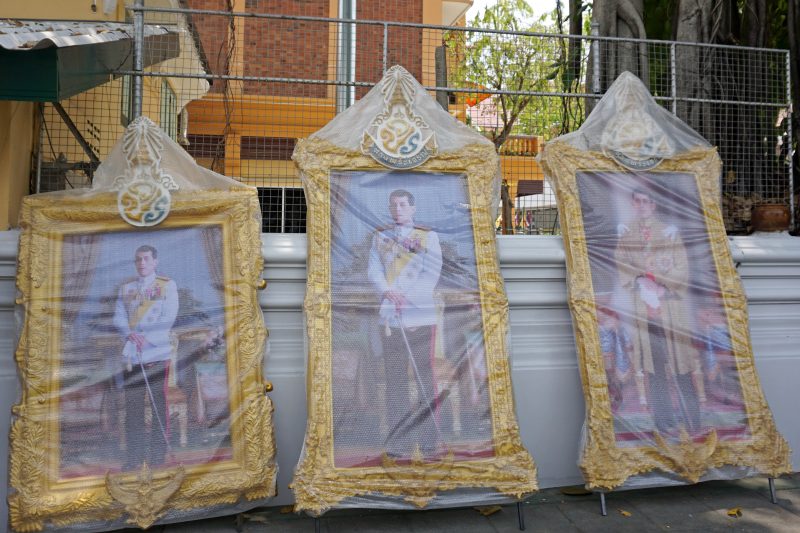Making of a monarch: King’s image peppers Thailand ahead of coronation
Imposing new images of King Maha Vajiralongkorn, some several-metres high, and decorations are mandatory at every state office ahead of his three-day coronation (Joe Freeman)
Bangkok (AFP) – It took $6,400 and a 12-hour drive for the local mayor to pick up the shrine and towering portrait of Thailand’s king which will stand in the centre of town — a small part of a massive palace publicity campaign for this weekend’s coronation.
“Every government office across the country will do the same,” said Aunchalee Chamchang, the mayor of Thungkhanan, a clutch of villages east of the capital.
Portraits of King Maha Vajiralongkorn often dressed in a golden robe and staring inscrutably forward have been in place at many state offices since he ascended the throne in 2016.
But imposing new images, some several-metres high, and decorations are mandatory at every state office ahead of his three-day coronation, which begins Saturday.
The most elaborate set-ups include the gilded-framed portrait, a large pedestal, flags, cone-shaped “pan phum” floral tributes and bunting in various shades of yellow — the colour of Thailand’s monarchy.
They can cost thousands of dollars, paid for through local budgets and subsidies, and will remain in place for at least the rest of the year.
Roads in Bangkok and across the kingdom are now flanked by the projection of royal power, intended to reflect the country’s devotion, loyalty and respect to the monarch.
But with Thais never far from the gaze of the king’s portraits, it also serves as a reminder of the apex position enjoyed by the royal institution.
Critics of the monarchy are rarely heard inside the country where the immediate royal family is protected by harsh lese majeste laws, which carry up to 15 years in jail.
The law is often broadly interpreted and includes the misuse of royal images.
Media based inside Thailand must self-censor.
– Films, money and stamps –
For the majority of Thais Maha Vajiralongkorn’s elaborate three-day coronation will be the first they have witnessed and curiosity is mounting.
His father Bhumibol Adulyadej died in 2016 after a reign spanning seven tumultous decades.
Bhumibol was revered as a unity figure in a politically divided nation and his image remains omnipresent in many Thai homes and shops.
Thais wore black or subdued colours for a year of official mourning after his death.
But Bhumibol’s 66-year-old heir is not as well-known by his subjects and spends much of his time abroad.
To address that gap, the new king’s image has slowly seeped into everyday life — on buildings, banknotes and stamps – since his father’s death.
A short film accompanying the royal anthem that runs before movies shown in Thai cinemas now tells the story of Vajiralongkorn, a prince turned monk, air force pilot, father and then king.
Royal successions everywhere are challenged by shifting iconography, according to Edoardo Siani, a Southeast Asian studies researcher at Kyoto University.
“The Thai state has dealt with this issue by introducing images of the new king gradually over an extended period of time,” he said.
The junta that took over in 2014 has driven the image campaign, while the powerful army chief has in recent weeks made several public oaths of loyalty.
Civil servants have been ordered to wear yellow in the run-up to the coronation, but the colour is yet to swamp the city.
Peddling around the Bangkok’s historic heart on a tricycle which doubles as a portable shrine to the Thai monarchy, replete with portraits of kings past and present, Komchit Kraithong said he was excited for the big royal event.
“I decorated it with portraits to show my loyalty,” he told AFP.
“It’s also as if I am serving their majesties by taking them around Bangkok.”
burs-joe/apj/dhc/ecl
Disclaimer: Validity of the above story is for 7 Days from original date of publishing. Source: AFP.


